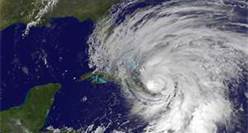How to Tell if Flood Water Has Damaged Your Car
 |
BETHESDA, MD Oct. 8, 2015: Following unprecedented rainfall on the Atlantic coast, flooding is taking its toll on car owners. Many in the affected areas have driven through high water that may have damaged their vehicles. Even though your vehicle may not have been flooded or completely covered in water, the non-profit Car Care Council recommends that you follow these guidelines to check for damage due to water intrusion or contamination:
- Check interior carpets, upholstery and door and trim panels for dampness. If they are wet, then the vehicle will need professional attention. If you simply let the carpet dry, it will quickly grow mildew and give off foul odors. Seat brackets, motors and modules should also be checked for rust and proper operation.
- Pull the engine oil and transmission fluid dipsticks and differential plug. If the fluid appears milky, diluted, is no longer its original color or is beige in color, then it is likely the pans contain water. The vehicle should be towed to your repair shop. Driving the vehicle with water present may damage the internal parts and require extensive overhaul or repairs. The council reminds motorists that some new synthetic differential fluids may appear to be milky, but are not water contaminated. When in doubt, a professional automotive technician should make the evaluation.
- Check the air filter for water. If it is wet, replace the air filter and change the oil.
- Check the undercarriage, bumpers, radiator area and frame for mud, grass, dirt, debris and rust. If any of these are present, the vehicle should be washed and cleaned as soon as possible.
- Have the brake system checked by a professional automotive technician.
- Check the exterior lights for moisture and water. Replace headlights and bulbs that contain water.
- Listen for abnormal noises while the engine is running. Make a note of where the noise is coming from and take the vehicle to a professional automotive technician as soon as possible.
- Have the suspension joints lubricated, if necessary. Many newer vehicles are lubricated at the factory for life; however, these joints should be checked for rust.


